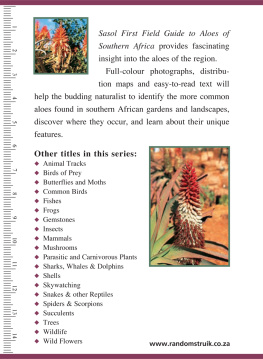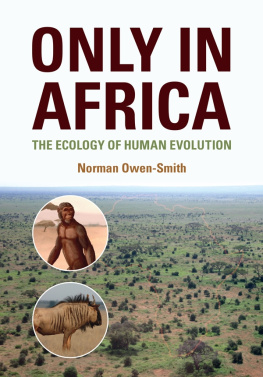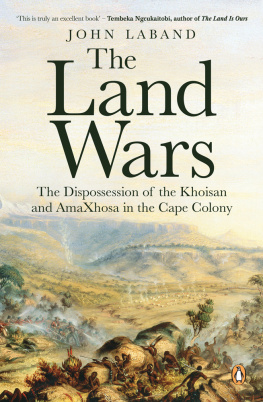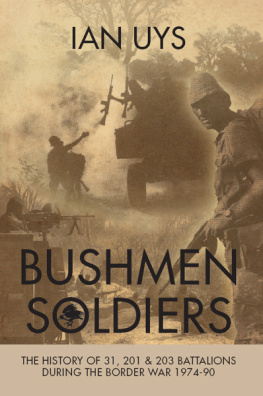Also by Andrew Smith
Pastoralism in Africa: Origins and Development Ecology (1992)
The Khoikhoi at the Cape of Good Hope: 17th Century Drawings in the South African Library (with RH Pheiffer) (1993)
Einiqualand: Studies of the Orange River Frontier (1995)
The Cape Herders: A History of the Khoikhoi of Southern Africa (with E Boonzaier, P Berens and C Malherbe) (1996)
The Bushmen of Southern Africa: A Foraging Society in Transition (with C Malherbe, M Guenther and P Berens) (2000)
African Herders: Emergence of Pastoral Traditions (2005)
Excavations at Kasteelberg, and the Origins of the Khoekhoen in the Western Cape, South Africa (2006)
The Origins of Herding in Southern Africa: Debating the Neolithic Model (2014)

INTRODUCTION
The name Khoisan was created to encompass the click-speaking people of southern Africa assuming that they were all genetically connected, before it was recognised that there are three separate languages (two Bushman languages, and Khoe), all of them mutually unintelligible. These were the aboriginal hunters and herders of the subcontinent. The genetics of the San (or Bushmen) are the most complex and diverse in the world today. This means it is possible that they are ancestral to all living humans. The Khoekhoen were the herding people who introduced domestic animals and occupied the winter rainfall areas in the west that precluded the expansion of Bantu-speaking Iron Age farmers whose crops were summer rainfall. This book is dedicated to the descendants of these fascinating people who survive today, even though, in the 21st century, they are still pushed aside by black (beginning 5th century) and white (beginning 17th century) colonial interests.
My first experience with traditional herders was on the Persian Gulf coast in Iran in 1964 where I used camels and donkeys to get my camping gear and equipment to the top of the mountains to give offshore seismic operators a navigation fix during oil exploration.
In 1968, after I had finished my undergraduate studies at the University of California, Berkeley, I hitch-hiked from Glasgow, Scotland, where my parents were living, to Nairobi, Kenya, to meet up with one of my professors, Glynn Isaac. During my stay in East Africa I had the opportunity to visit Maasai homesteads ( manyattas ), my first contact with Africas pastoral people. While in Nairobi, I got a message from one of my other professors, J Desmond Clark, inviting me to be part of the scientific contingent to the Ennedi Mountains of Libya to start at the end of the year (1969).
Unfortunately, Muammar Gaddafi seized power in Libya in September of that year and our plans had to change, so the expedition became the British Ar Mountains Expedition to Niger. On this expedition I had my first contact with Tuareg herders, who helped us with finding camels and with the logistics of working in the Central Sahara. The excavations I conducted in Niger included work on early pastoral sites of the Sahara, and this became the focus of my doctoral research.
I was able to formulate an additional programme to do the second half of my thesis research, which I did in the Tilemsi Valley, north of Gao in Mali, in 1971. Again, I worked closely with Tuareg herders, and was able to learn a great deal about nomadic pastoralism.
On my return to Berkeley in 1971, I was invited by Desmond Clark to join an expedition to the Nile Valley, south of Khartoum, which took place in 1972.
I went to Ghana to teach at the University in 1973, and finished my Berkeley PhD thesis there, which was awarded in 1974.
I joined the Department of Archaeology, University of Cape Town, in 1977. It was a natural step in South Africa to continue my research into herding societies there, and so began my interest in the Khoekhoen. I excavated at the richest prehistoric herding site in the Western Cape, Kasteelberg, on the Vredenburg Peninsula, between 1982 and 1992, and published a monograph on the work in 2006.
In 1993, I attended a month-long course on the Bedouin at Sde Boker in the Negev, Israel, meeting a number of the last transhumant herders in the country.
I worked with Richard Lee (University of Toronto) and Ju/hoansi associates in northern Namibia in 1995 and 1997, doing archaeological excavation, while Richard gathered information on the Bushman history of Nyae Nyae from local elders.
In 2000, I was invited to be an expert witness at a court case in Cape Town on behalf of the Richtersveld community who were trying to claim aboriginal rights to their land from Alexkor Mine. The case was decided in favour of the community by the Constitutional Court in 2001.
In 2001, I excavated at Bloeddrift 23, a pastoralist site on the Lower Orange River in the Richtersveld, and that year I was also invited by Rudolph Kuper to join an expedition organised by the Arid Climate Adaptation and Cultural Innovation in Africa group from Cologne, Germany, to the Western Desert of Egypt, where we worked on prehistoric sites.
I subsequently surveyed archaeological sites in the Western Cape, and excavated the St Helena Bay skeleton, published in 2014 as First ancient mitochondrial human genome from a pre-pastoralist southern African.

CHAPTER 1
Khoisan Peoples
[H]e saw the fate of history in popular culture as conditional on its self-appointed masters being prepared to reacquaint themselves with the imaginative skills of the storyteller.
Simon Schama, in The New Yorker , 1998
Ive found one! exclaims a young learner from a school in rural South Africa on a field trip to see where Palaeolithic stone tools come from. The learners have been given clues on how to recognise flaked stone, and the site they are walking across is an open path inside a nature reserve. Such excitement underlines the fact that archaeology is everywhere, if you know how to see it.
To this group of pre-teen children, these tools are a first awareness of people in the distant past having lived in the same space that they themselves inhabit today. The next step is to ask how prehistoric people lived, and what would have been important to them. To answer this question, one child quickly says, Water and, yes, their stone tools are not far from a permanent stream. Discussion about food, hunting and gathering, then, is a logical addition to understanding the cultural ecology of early Khoisan people in their area, even if a time depth of 50 to 100 000 years might be difficult for them to envision. Middle Stone Age artefacts dated to this period are widespread across the South African landscape, sometimes in the most unusual places, such as in the high country and on steep slopes.
The importance of leaving the stone tools where they are found is stressed by the archaeologist. The learners quickly understand that the tools are important clues to the past, and if removed without proper documentation and recording, would be lost to scientists in the future.
In this book I would like to introduce the archaeology and genetic background of the First People of southern Africa: the Khoisan. This is not purely an isolated academic exercise, as there is a good chance that we all, in our distant past, are ultimately descended from these people who lived at the southernmost end of Africa.














